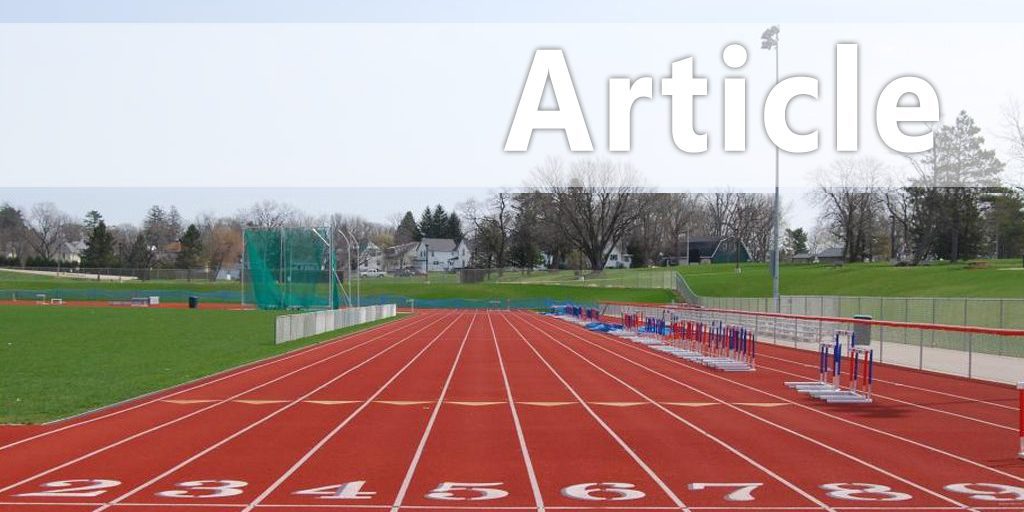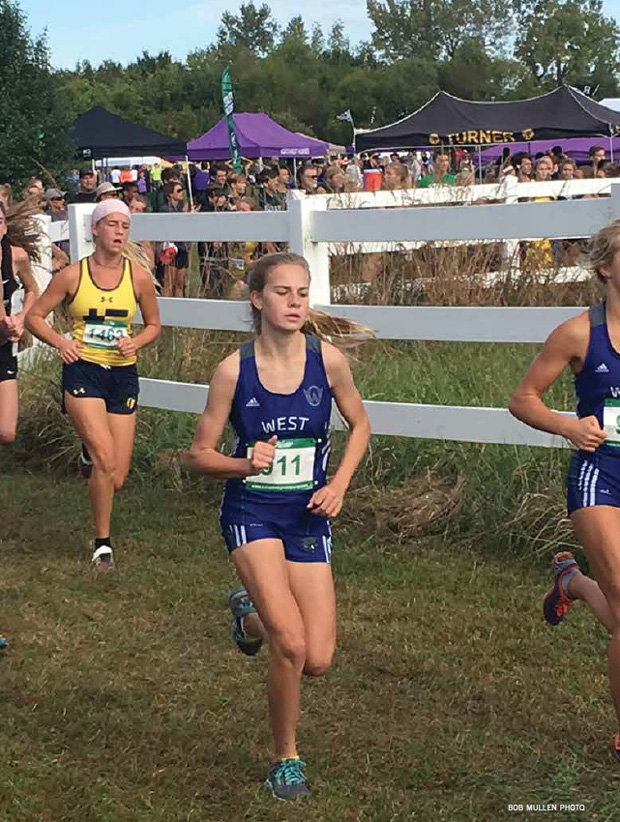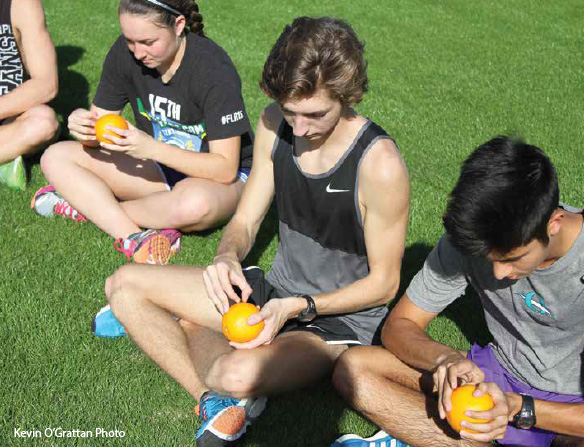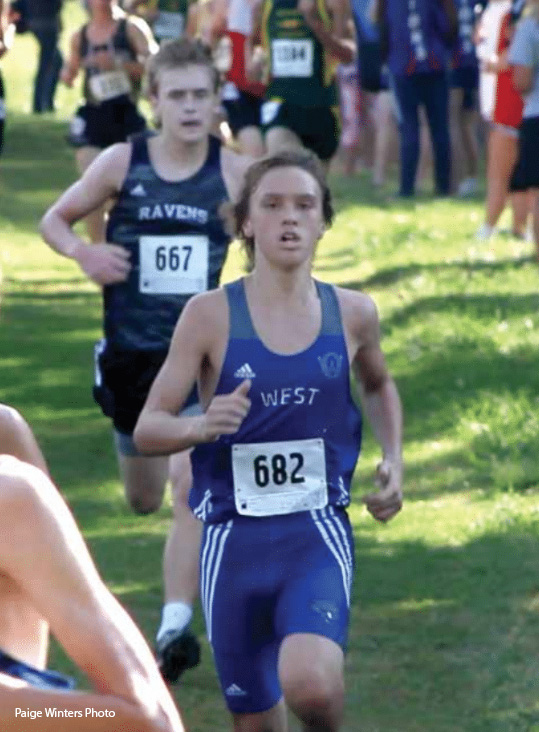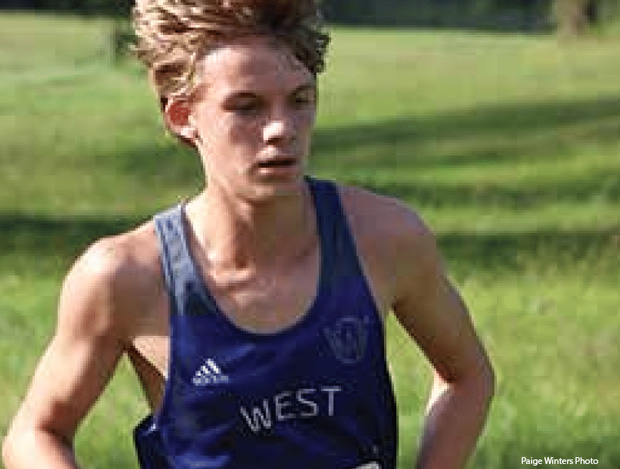| Cross Country - The Basics of Visualization |
| By: Kevin O'Grattan
Originally Published in: Techniques Magazine Provided by: USTFCCCA As coaches, we are always looking to help our athletes squeeze every drop of performance from themselves. When turning to the psychological toolbox, one of the tools commonly used is that of visualization. Visualizations can be used in a variety of formats to assist athletes in everything, from dealing with stressors associated with competition to remaining relaxed during their kick late in a race. While most coaches recognize visualizations can be helpful with athlete performance, many coaches do not take time to practice visualizations as a skill with the intent of improving athletes’ ability to visualize. In practice, many coaches just expect their athletes to be able to effectively use visualizations as a tool. It has been noted that athletes competing at the highest levels internationally are reported to frequently use visualization techniques (Clarey, 2014). In many sports, such as golf, increased performance has been associated with increased use of imagery by athletes (Gregg and Hall, 2006). Studies have shown visualizations can increase self-confidence, athlete motivation, and decrease performance anxiety (Vealey, 2005). In addition, softball players using an imagery program were shown to experience increases in selective attention (Calmels and Berthoumieux, 2004). By working on this skill with our athletes, we can put them in a position to be more successful more consistently.
It is important for coaches to realize that visualizing is a skill, and like all skills, our athletes will come to us with varying abilities along the spectrum of mastery. All of our athletes can move further along that spectrum, and one key to improvement may be refining the basics or prerequisites for high level visualizations. Whether we are looking to have our athletes use visualizations for mental practice or use visualizations to dial in their excitation level prior to competition, each of these methods can be enhanced by increasing skills associated with producing visualizations. One of the first competencies required for visualization is the ability to produce vivid images. “Vividness refers to how clearly athletes can see an image and how detailed the image appears to them” (Williams, & Krane 2015, p.242). Vividness also describes how many senses are used in the imagery. Sometimes we think of visualization as mental pictures, but athletes will be better served if their other senses are also involved in their mental training preparations. As American Olympic skiing aerialist Emily Cook says, “You have to smell it. You have to hear it. You have to feel it, everything” (Clarey 2014, p.6). Introducing training events to help athletes begin including additional sensory involvement during visualizing can be one of the first activities when seeking to create better visualizations. The basics are best introduced during the cross country off season. The summer provides an easy time to help my cross country athletes learn in a non-stressful environment. Early in the training season, I will start by handing out oranges after the team has cooled down at the end of a practice. I find citrus works especially well for vividness training, as the aromatic component suits itself to inducing additional sensory recruitment during visualizations. I usually bring one orange for each member of the team, but you could certainly do this with a single orange. I pass them out and have the athletes gently take a fingernail and run it along the orange breaking the skin, releasing the oil, but not through to the pith layer. Then, I have the athletes observe the orange, looking closely at its shape, the pores on its skin, and the fragrance the oil is emitting. After giving them a minute or two, I have the athletes set aside the orange or collect them back up. I ask them to close their eyes and imagine the orange. I reiterate those things I had pointed out for them to observe like the smell, its color, and its shape. I want them to create a very vivid reproduction of the orange they were holding in their mind and hope to activate more than just their visual representation. The goal is to have more senses involved in the visualization. The athletes usually do well with this activity, and as a bonus, I can pass back out the oranges at the end for them to eat. It is important for coaches to be mindful that when possible, making training enjoyable will help the athletes buy in. Since endurance training can be arduous, especially for newer athletes, this vividness training where they end with getting to eat the training tool can incorporate enjoyment in their training. This particular training activity could be included as early in the training cycle as wanted. There is no risk of starting visualizations training too early when developing foundational techniques. The next step in the process for athletes is to work on controlling the images they create. Control in this context refers to the ability to manipulate the mental images and sensations they produce during visualization training. Here, I continue to build upon the techniques introduced with vividness as we progress towards ultimately using running examples. I will often continue to use citrus with my cross country athletes as the object so that they can continue to emphasize all of their senses. If I used oranges for the vividness activity, I may change it to grapefruit or a lemon so they experience a slightly different training stimuli. I also intentionally keep these activities relatively basic so athletes across the visualization ability spectrum can participate with success. For the control practice, I will have the athletes imagine the fruit is rolling down a ramp. If I suspect many of my athletes may have difficulty with this task, I will have a small wooden board on hand to give a visual demonstration for them to work from. Similar to the vividness training, I would ask them to close their eyes and visualize the fruit at the top of a ramp. I would remind them to take the object in with all their senses noting its size, shape, texture, and smell. Next, I would ask them to imagine having the fruit roll down the ramp. As this is something they had just seen, it should be fairly easy for them to replicate when visualizing. The next step is to ask them to practice this visualization forwards and backwards. Perhaps having them visualize the fruit at the bottom of the ramp and then rolling backwards up the ramp. This rewind practice technique puts the control of the visualization in the hands of the athletes. From this point, the coach can ask the athletes to control the fruit in visualizations that would not be possible in the real world. This can force the athlete to truly take control of the mental images produced. For example, the coach can instruct the athletes to have the fruit roll half way down the ramp and then have it stop before rising above the center of the ramp and remain in place floating stationary. Unlike the first control activity, this second control activity is not something you could physically demonstrate to your athletes and would push them to actually control the visualization they have created. This type of activity can progress to any number of mentally challenging scenarios that will test your athletes’ ability to control the images they produce. These control practice sessions can be a lot of fun for your athletes if the coach takes time to create interesting scenes for the athletes to imagine as they mentally manipulate the objects they imagine. Remember to keep it fun and be creative when thinking up what you will have the athletes control in their visions. Another option in creating control experiences would be to have the athletes suggest images, which can help them feel included in the process and have more team members commit to the practice. For example, athletes may suggest an outlandish scenario during visualization control practices, such as an elephant sliding down a playground slide. Although this scenario would have nothing to do with running, the practice can still have an impact on their ability to create visualizations and may even be a healthy diversion from training. Also, remember to generate prompts that will still include multi-sensory input such as smell or feel. The next step in training the foundations of visualization is to move towards having athletes visualize running experiences. With the ultimate goal of having cross country athletes visualize racing scenarios, we want to move from improved vividness and image control towards more specific running visualizations. The idea is still to have athletes work from recent stimuli, just as they held and smelled the orange before trying to create the image in their mind. So, I like to pair initial running visualization trainings with absolute speed training for cross country athletes. However, this would work for any short distance high intensity workout that requires ample rest of several minutes between repetitions. I have found that unlike sprinters, distance athletes can sometimes have difficulty waiting thought the appropriate rest times for this type of workout. Therefore, I have them use this rest time, between runs, for visualizing. I will usually have my athletes split into two groups. While the first group runs, the second group can watch them and then close their eyes to visualize themselves completing the run event for a minute or two. The stimulus here is again experienced just before the athlete is asked to visualize it so they have a very recent reference to work from. I believe this puts them in a good position to be successful in early running visualization training. The second group would then take the start line and do their run, while the first group is still in their recovery period. This would allow the first group to do the same visualization practice the second group had done during their run. As athletes continue this type of training over time, the repetitions of practicing visualizing would allow them to transition away from needing to see visual stimuli prior to being able to do a visualization. However, providing visual or auditory stimuli later in the season can still be a powerful tool in aiding athletes in creating more impactful visualizations. As competition season begins, I love to have my athletes do visualizations while listening to a recording of our local starter giving final instructions through the sounding of the starter’s pistol. It allows me to reinforce the importance of additional sensory input when creating images and helps my athletes create powerfully vivid visualizations. This recording is something you can have an assistant coach, volunteer, or athlete help obtain at a meet during your season. You may need to try this over a few meets to find the optimal positioning for making the recording. I find it helpful to hear the starter in addition to the background noise of athletes at the line leading up to the start. Once you have a good recording, the sounds of the bustling of athletes at the start line and the starting procedure will again help your athletes create a multisensory visualization in preparation for race day. I sequence all of these visualization training events to try and build upon one another with each progressing towards realistic and powerful images for my athletes. The ultimate goal is that athletes will be able to create vivid, and controllable visualizations of race based scenarios where they are engaging teammates and opponents for positive outcomes. At the end of the day, we want our athletes to picture themselves in races doing well or overcoming adversity.
One of the appealing characteristics of training vividness and control for visualizations is that it can be incorporated early in the training cycle. There are no prerequisites to this training and starting early will allow for better development. Our team is introduced this visualization training to athletes within the first or second week of summer conditioning with cross country athletes. During this time, the coach should elicit feedback from athletes to monitor progress and add additional complexity as task performance increases. The athlete feedback for early sessions should help coaches understand how well the athletes are visualizing and can illicit feedback for what types of practice events the athletes may want to work on. It is important to note that coaches should coordinate this training to their season plan so that athletes’ will be prepared to practice multi-sensory complex race-based visualizations well ahead of critical championship post-season meets. All too often, coaches leave advanced visualization practice till the end of the season, and athletes are not afforded the opportunity to develop the skill prior to its implementation. Furthermore, these skill building techniques are highly transferable to all athletic endeavors. All track & field event groups can benefit from strengthening their visualization abilities through the aforementioned training techniques.
Strengthening the components of visualization through purposeful practice can enhance the effectiveness of athletes’ psychological training. As cross country coaches, we recognize that mental training is just as important as physical training for athletes to compete at their potential. Distance running challenges our athletes both in competition and in practice by the very duration of exertion required. In developing any mental training program, it is important to be mindful that visualization is a skill, and like any skill, it can be improved by first focusing on executing foundational components at a high level. REFERENCES Calmels, C., & Berthoumieux, C. (2004). Effects of an imagery training program on selective attention of national softball players. The Sport Psychologist. 18, 272- 296. Clarey, C. (2014). Olympians use imagery as mental training: flying high while still on the ground. American Swimming Coaches Association Newsletter. 5, 6-9. Gregg, M., & Hall, C. (2006). The relationship of skill level and age to the use of imagery by golfers. Journal of Applied Sport Psychology. 18, 363-375. Vealey, R.S. (2005). Coaching for the inner edge. Morgantown, WV: Sheridan Books. Williams, J.M., & Krane, V. (2015). Applied sport psychology: personal growth to peak performance. 7th ed. McGraw-Hill. New York, NY. Kevin O’Grattan is the coach of the boys and girls cross country teams at Olathe West High School in Olathe Kansas. |
